Introduction
What Do Baby Robins Eat: Baby American Robins eat insects and other arthropods brought to the nest by adults. The parents hunt for insects that are most available at the moment and as nutritious as possible. Larvae, and especially caterpillars such as cutworms, are among the favorites.
Baby robins, with their distinctive blue eggs and charming songbird parents, are a common and delightful sight in many backyards and gardens. These fledglings are born entirely helpless, relying entirely on their parents for care and nourishment during their initial stages of life. Understanding what baby robins eat is crucial for anyone interested in observing or assisting these young birds.
Baby robins are altricial, which means they are born in a relatively undeveloped state, requiring extensive parental care. For the first several days after hatching, their diet consists mainly of regurgitated food from their adult caregivers. Parent robins primarily feed their chicks insects, spiders, and other small invertebrates, providing essential proteins and nutrients for their rapid growth and development.
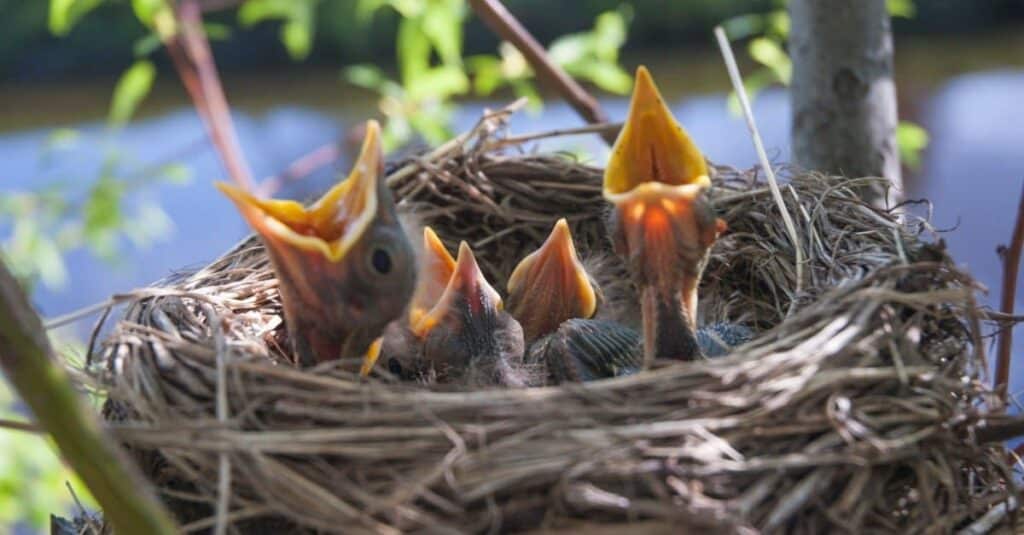
What do baby robins eat?
For the first four days of a nestling’s life, the parent birds regurgitate partly digested food into each baby’s mouth. By five days of age, the nestlings get earthworms that parents break into small mouthfuls. The babies eat more each day. Soon parents give them whole worms and large insects.
Baby robins, also known as robin nestlings, have specific dietary needs during their early stages of life. What they eat primarily depends on their age and developmental stage.
First Days of Life: When baby robins hatch, they are entirely dependent on their parents for nourishment. During the initial days, their diet consists mainly of regurgitated insects and worms that the adult robins collect. This protein-rich diet is crucial for their rapid growth.
Transition to Solid Food: As the baby robins grow and their feathers start to develop, they transition to a diet that includes soft-bodied insects, such as caterpillars, spiders, and other small invertebrates. The parents continue to catch and feed these foods to their chicks.
Fruits and Berries: As they near the time of fledgling (leaving the nest), baby robins’ diets expand to include partially digested fruits and berries provided by their parents. This introduces them to a broader range of potential food sources.
Independence: After leaving the nest, young robins continue to be fed by their parents while learning to forage for themselves. They gradually incorporate a variety of foods, including insects, fruits, and berries, into their diet as they become more self-sufficient.
During their time in the nest and shortly after fledging, baby robins are entirely reliant on their parents for food. Providing a diverse and protein-rich diet during these early stages is crucial for their growth and development, preparing them to thrive in the wild as they become independent adult robins.
How often do baby robins eat?
The parent robins are constantly searching for food and feeding their babies during daylight hours. A baby robin should be fed as much as it can eat at least every half hour from sunrise to sunset. You can take a 2-3 hour break maybe once a day.
Baby robins have voracious appetites, and their feeding frequency varies depending on their age and developmental stage.
Newly Hatched Chicks: During the first few days after hatching, baby robins require frequent and almost continuous feeding. Parent robins make countless trips to the nest, delivering regurgitated food multiple times per hour to provide essential sustenance for their helpless chicks.
Feeding Intervals: As the baby robins grow and develop, the feeding intervals gradually become less frequent but remain consistent throughout the day. Parent robins continue to feed their offspring a diet rich in insects, worms, and other protein sources.
Increased Independence: As the baby robins near the time of fledgling (leaving the nest), they become more active and are fed slightly less often. This adjustment in feeding frequency helps prepare them for the transition to self-feeding.
Independence: After fledging, young robins start to forage on their own, and their feeding frequency further decreases as they become more self-sufficient. They continue to receive occasional feedings and guidance from their parents as they learn to find and consume a broader range of foods.
The feeding schedule of baby robins is a dynamic process that shifts as they progress from helpless hatchlings to independent fledglings. It’s a testament to the dedication of their parents, who tirelessly work to ensure their young receive the nutrition required for growth and development during this critical period of their lives.
What are baby robins called?
The young of many birds, baby American robins are known as chicks. Immediately after emerging from their eggs, they are known as hatchlings. Until they are ready to fledge, they are known as nestlings, and once they are sufficiently developed and ready to leave the nest, they are called fledglings.
Baby robins are commonly referred to as “nestlings” or “chicks.” These terms describe the early developmental stages of robin offspring, from the time they hatch until they fledge or leave the nest.
Nestlings: The term “nestlings” is often used to describe baby robins shortly after they hatch from their eggs. At this stage, nestlings are entirely dependent on their parents for food, warmth, and protection. They have featherless bodies and are unable to see or move about the nest independently.
Chicks: As the nestlings grow and develop feathers, they are often referred to as “chicks.” During this stage, they become more active and may begin to open their eyes. While they are still reliant on their parents for nourishment and care, chicks become increasingly aware of their surroundings and start to exhibit signs of curiosity and alertness.
The transition from nestlings to chicks marks a crucial phase in the life of baby robins. During this time, they undergo rapid growth and development, with their parents diligently providing food and protection. Eventually, as they become more mature and capable, they will fledge from the nest, signaling the start of their journey to independence as fledgling robins.
What are baby robins like?
Baby robins may be undeveloped, with very few feathers and bulging eyes at first, but beauty is in the eye of the beholder. Their parents think they’re the most beautiful, wonderful babies in the world.
Baby robins, also known as nestlings or chicks, go through several distinct developmental stages before they fledge or leave the nest.
Newly Hatched Nestlings: When baby robins first hatch, they are incredibly vulnerable and helpless. They are small, featherless, and have their eyes closed. At this stage, they rely entirely on their parents for warmth, protection, and nourishment.
Feather Development: Over the course of several days, baby robins gradually develop feathers, starting with pin feathers that appear as small bumps on their skin. Their eyes begin to open, allowing them to become more aware of their surroundings.
Nestling Phase: During the nestling phase, baby robins have feathers covering their bodies but are still unable to fly. They remain in the nest and are fed by their parents, primarily on a diet of insects and worms, which provide essential proteins for their growth.
Chick Phase: As they continue to grow and develop, baby robins are often referred to as chicks. They become more active, start to move around the nest, and may begin to perch on the edge. Chicks are more alert and curious about their environment.
Fledglings: The final stage is when baby robins fledge, which means they leave the nest and start exploring the world outside. Fledglings are still reliant on their parents for food and protection, but they are more mobile and gradually learn to find their own food.
In their early stages of life, baby robins require constant care and attention from their parents to ensure their survival. As they grow, they become more independent and develop the skills they need to thrive in the wild as adult robins.
How long do baby robins stay?
Baby robins jump from their nest when they are about 13 days old (but the range is 9 – 16 days old). A. After leaving the nest (fledgling), it takes another 10-15 days for babies to become strong fliers and independent birds.
The length of time that baby robins stay in the nest and remain dependent on their parents varies depending on their developmental stage and the species of robin.
Hatching to Nestling Phase: Baby robins hatch from their eggs in an altricial state, meaning they are initially helpless and entirely dependent on their parents for warmth, protection, and nourishment. This phase lasts for about 9 to 16 days, during which the nestlings are blind, featherless, and remain inside the nest.
Nestling to Chick Phase: After their eyes open and they begin to develop feathers, the baby robins transition to the chick phase. During this period, which lasts approximately 10 to 14 days, they become more active, explore the nest, and start to perch on its edge. They still rely on their parents for food.
Fledgling: The fledgling stage occurs when baby robins leave the nest and begin to explore the world outside. This typically happens around 13 to 15 days after hatching. While fledglings are still dependent on their parents for food and protection, they are more mobile and gradually learn to forage on their own.
Baby robins spend a total of about 3 to 4 weeks in the care of their parents before they become more independent. During this time, they undergo rapid growth and development, acquiring the skills and strength needed for survival as they progress toward adulthood.
Can baby robins fly?
Baby robins can’t fly well when they leave the nest. They must build up muscles and grow adult feathers to be strong fliers. Beginners need practice! As flying improves, they follow their parents. Baby robins cannot fly immediately after hatching; they go through a gradual process of development before they gain the ability to fly.
Hatching: When baby robins first hatch, they are entirely flightless. They have featherless bodies and are unable to move about the nest independently. At this stage, they rely entirely on their parents for warmth and nourishment.
Feather Development: Over the course of several days, baby robins gradually develop feathers. These feathers start as tiny pin feathers, which eventually grow and cover their bodies. The development of feathers is a crucial step towards flight.
Nestling Phase: As the baby robins grow and their feathers continue to develop, they enter the nestling phase. During this stage, they become more active and begin to move around the nest, but they are still flightless. They rely on their parents to provide them with food.
Chick Phase: The chick phase follows the nestling phase, during which baby robins are more alert and active. They may perch on the edge of the nest but are still unable to fly. During this phase, their flight feathers continue to grow.
Baby robins start as flightless nestlings and gradually progress to becoming fledglings with the ability to fly. The development of flight capabilities is a crucial aspect of their growth and independence.
Do baby robins make noise?
Baby robins always look vulnerable with their short frowning beaks, short tails, short wings and fluff-tufted heads. Indeed they are. They don’t fly well and they make loud noises that could draw unwanted, predatory attention. But for a baby robin, the noise is necessary.
Baby robins do make noise, but the nature of their vocalizations changes as they grow and develop.
Newly Hatched Nestlings: When baby robins are newly hatched, they are very quiet. They may emit faint, high-pitched peeping sounds when they are hungry or uncomfortable. At this stage, their vocalizations are not as loud or distinct as those of older birds.
Nestling and Chick Phases: As baby robins progress from the nestling phase to the chick phase and start to develop feathers, their vocalizations become more noticeable. They may produce soft chirping or peeping sounds, especially when they are hungry and waiting for their parents to feed them. These sounds serve as a way to communicate their needs to their caregivers.
Fledgling: When baby robins fledge or leave the nest and become fledglings, their vocalizations become more varied and pronounced. They may produce louder and more distinct chirps and calls as they explore their environment. Fledglings often communicate with their parents and siblings through these vocalizations.
The vocalizations of baby robins play a crucial role in their interactions with their parents and siblings, helping them receive food, attention, and guidance. As they mature and become more independent, their vocalizations gradually change to match the demands of their new life outside the nest.
Can you pick up baby robins?
It’s generally not advisable to pick up baby robins unless it is absolutely necessary and you are trained to do so or working under the guidance of a wildlife rehabilitator.
Sensitivity: Baby robins are delicate and easily stressed. Handling them can cause them significant stress, which can be harmful to their health.
Parental Care: Baby robins are typically cared for by their parents. Interfering with their natural caregiving process can disrupt their development and reduce their chances of survival.
Legal Considerations: In many places, it is illegal to handle or possess wild birds, including baby robins, without the appropriate permits or licenses. These laws are in place to protect wildlife and prevent the spread of disease.
Health Risks: Handling wild birds, including baby robins, can pose health risks to humans, as they may carry diseases or parasites that can be transmitted. It’s important to use caution and proper hygiene if you must handle them.
These experts have the training and knowledge to assess the situation and provide appropriate care to the bird if needed. They can also guide you on what to do in the specific circumstances. In most cases, it’s best to leave baby robins in the care of their natural parents or wildlife professionals to ensure their well-being and a higher chance of survival.
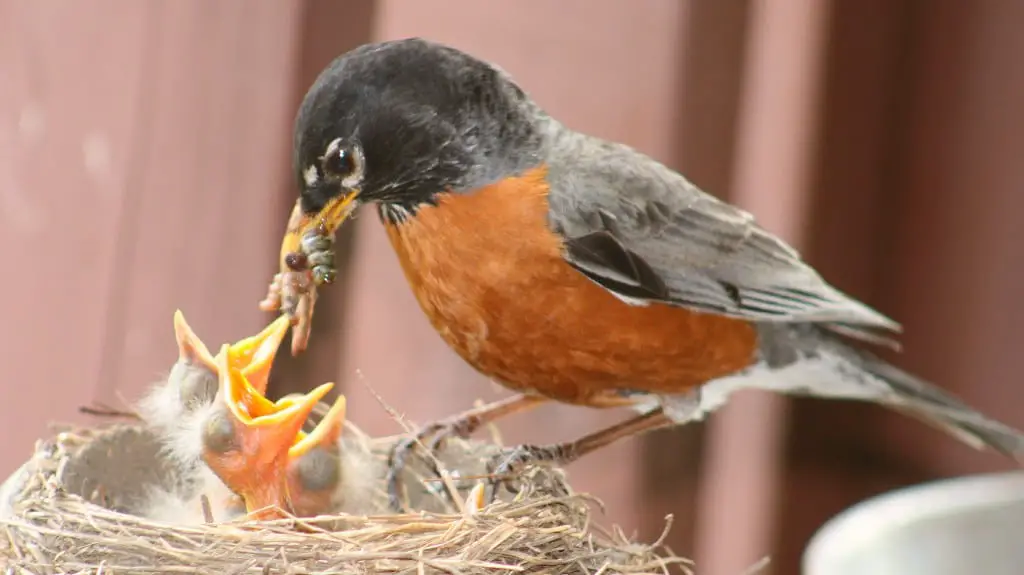
Conclusion
The diet of baby robins undergoes a significant transformation as they progress through their early stages of life. From hatching as vulnerable, featherless nestlings to eventually fledging and becoming more independent, baby robins rely on their parents for nourishment and care.
The early days of their lives are marked by a diet rich in protein, primarily consisting of regurgitated insects and worms, which are essential for their rapid growth and development. As they grow and develop feathers, baby robins transition to a diet that includes soft-bodied insects, spiders, and other small invertebrates, all delivered directly by their parents. This diet ensures they receive the necessary nutrients thrive.
As they near the time of fledgling, baby robins start to incorporate partially digested fruits and berries into their diet, expanding their palate and preparing them for independence. It is a testament to the delicate balance of nature and the remarkable journey of these songbirds from helpless hatchlings to self-sufficient, thriving robins in the wild.

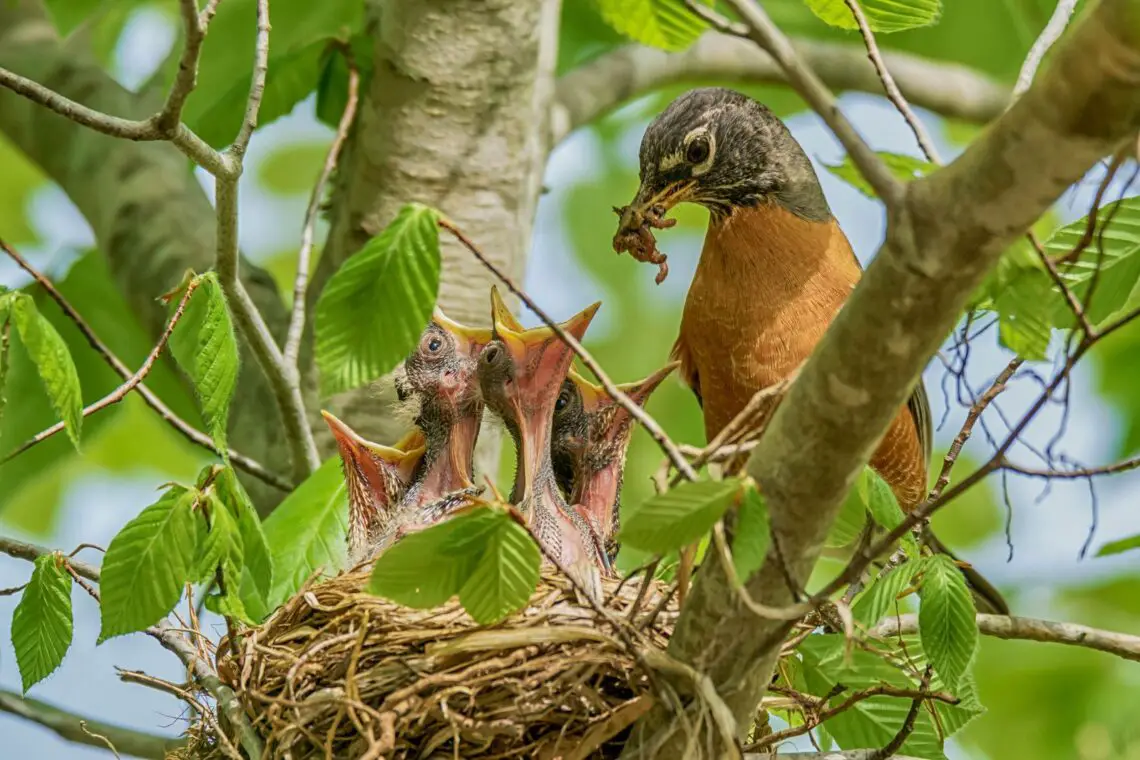
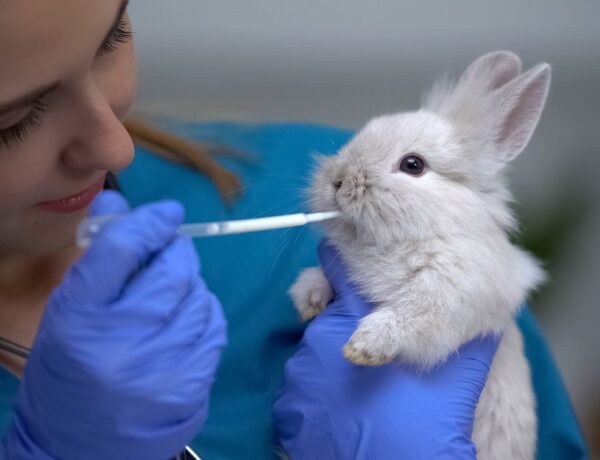
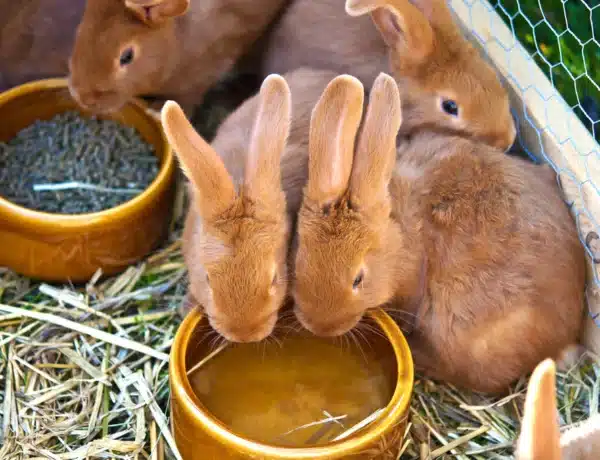
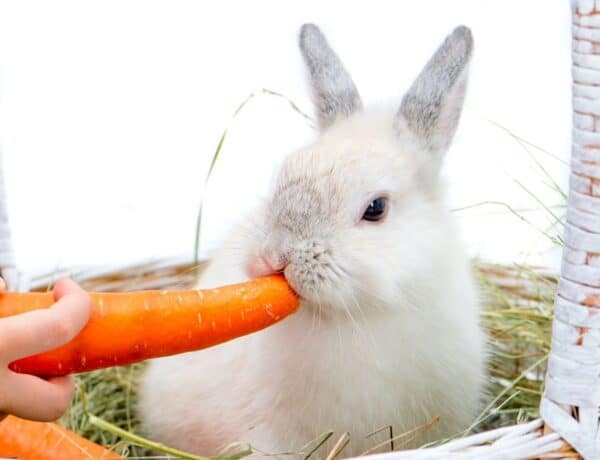
No Comments